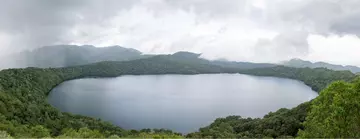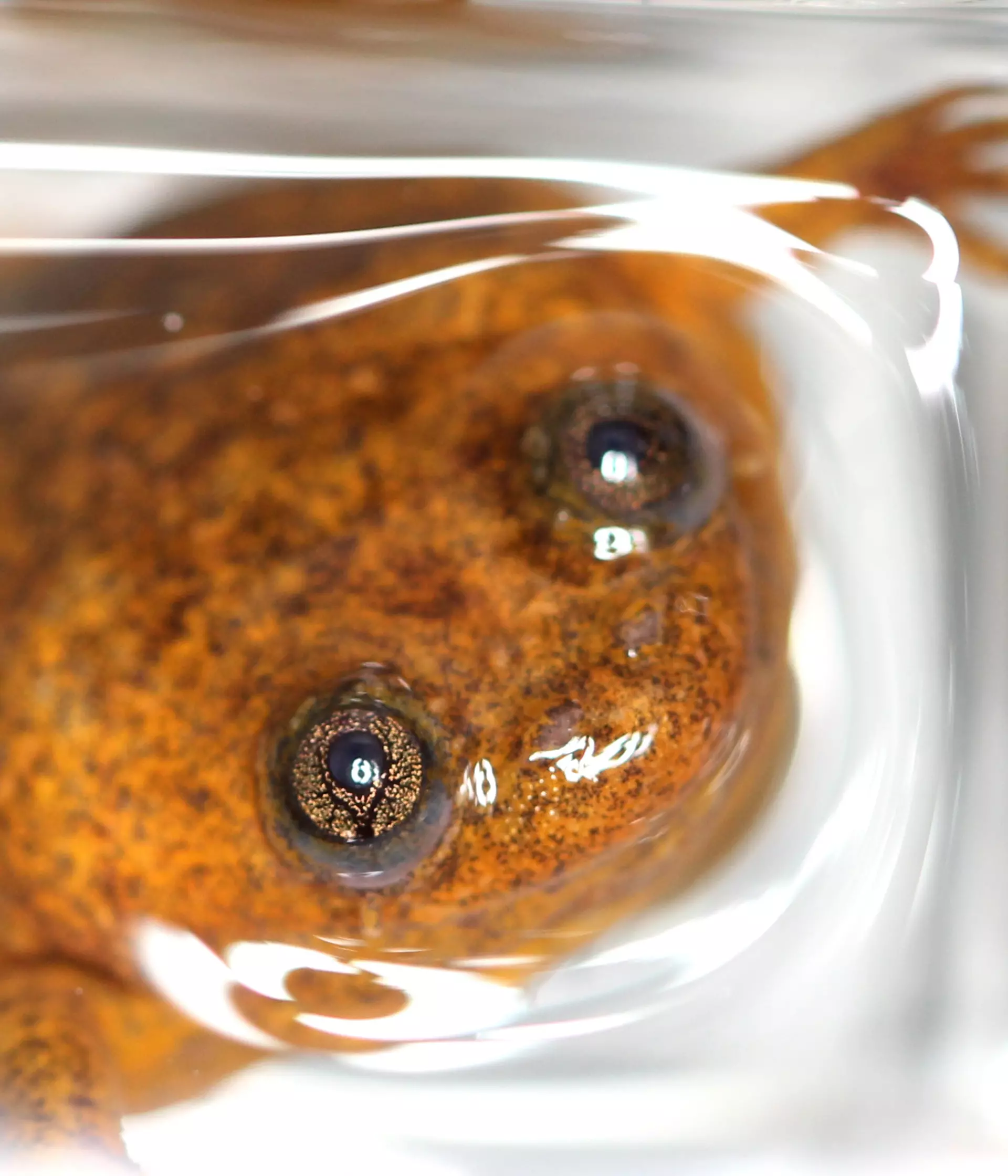
Lake Oku frog conservation
The Lake Oku clawed frog lives in a single 2km2 lake in Cameroon which is around the size of Regents Park. The lake sits on Mount Oku, 2,227 metres above sea level in the crater of a dormant volcano and is surrounded by thick cloud forest. There are no native fish in Lake Oku, and these frogs have been able to take advantage of their absence. Pressure on this tiny ecosystem is growing, as fears of fish introduction and habitat introduction put them at real risk of extinction.
We pioneered Lake Oku frog breeding, becoming the first place in the world to successfully breed the species in 2014. This allowed our conservationists to gain crucial insights into the behaviour and biology of the adult frogs and their tadpoles for the first time. We observed behaviour which had never been seen before, either in the wild or in captivity, and shared our expertise with both Cameroonian conservationists in the wild and other zoos to kickstart more breeding programmes. We're continuing to establish a healthy back-up population of Lake Oku frogs, and you may be able to see Lake Oku frog tadpoles and eggs at our Reptile House.
Lake Oku frogs are one of our EDGE species, which at ZSL we are working to protect because they are both evolutionary distinct (ED) and globally endangered (GE).
Lake Oku frog facts
- The Lake Oku frog is entirely aquatic and do not leave the water.
- Tadpoles can take up to a year to metamorphose (turn into frogs), this is an extremely long period of time relative to other clawed frogs.
- They've developed extra chromosomes throughout their evolution, having 12 sets.
- The species are native to one small crater lake in Cameroon
Lake Oku frog habitat
A freshwater lake in the mountains which has an average depth of 32m.

Lake Oku frog threats
The high likelihood of fish introduction is constant threat for the Lake Oku frog, and their habitat is at risk of degradation which could cause a decline in water quality and increased risk of disease.
